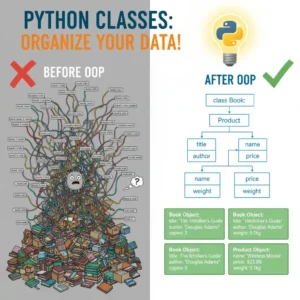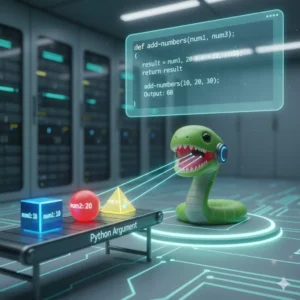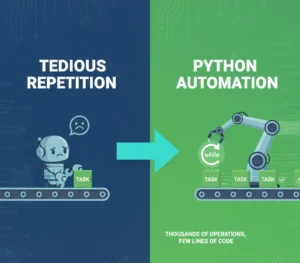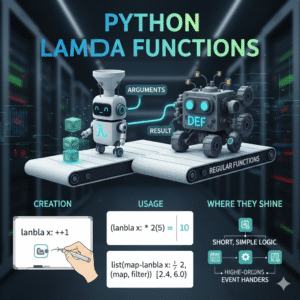Have you ever been working with Python classes and thought, “There has to be an easier way?” If you’ve dabbled with inner classes—a class defined within another class—you might have found the syntax confusing and the structure hard to follow. You’re not alone. While powerful, inner classes can complicate your code, making it difficult to read and maintain.
In this beginner-friendly guide, we’ll explore a common Python stumbling block and reveal a much simpler alternative. By the end of this post, you’ll understand how to structure your classes more cleanly, making your code easier to write, debug, and understand. Let’s move from complexity to clarity!
Why Inner Classes Can Be Problematic
In our previous video, we created an inner class. The goal was to have an OnlineMeeting class that contained a Date class within it. On the surface, this seems organized—keeping related things together.
However, this approach has a major downside: complexity. To access the date of a meeting, you have to navigate through the outer class every time, using a chain like om1.date.dd. This creates a nested structure that can be awkward to work with, especially as your project grows. It ties the Date class’s existence solely to the OnlineMeeting class, which isn’t always necessary or logical.
The Cleaner Alternative: Using Separate Classes
The good news is that there’s a much cleaner and more straightforward method: using separate, independent classes. This approach aligns with a key Python principle: “Flat is better than nested.”
Instead of hiding the Date class inside OnlineMeeting, we define them as two separate classes at the same level. This makes both classes first-class citizens in your code.
Let’s look at how this works in practice.
Building Our Classes: OnlineMeeting and Date
First, we define our Date class. Its job is simple: hold day, month, and year information.
# A separate, independent Date class
class Date:
def __init__(self, dd, mm, yyyy):
self.dd = dd
self.mm = mm
self.yyyy = yyyy
# A method to neatly display the date
def display(self):
print(f"Date: {self.dd}/{self.mm}/{self.yyyy}")Next, we define the OnlineMeeting class. Notice that its __init__ method now expects a date object as one of its parameters.
# A separate OnlineMeeting class that USES a Date object
class OnlineMeeting:
def __init__(self, id, date):
self.id = id
self.date = date # This 'date' is an instance of the Date class
# A method to display the meeting's details
def display_meeting(self):
print(f"Meeting ID: {self.id}")
self.date.display() # We call the display() method from the Date objectSee how clean that is? The OnlineMeeting class doesn’t need to know how the Date class works internally; it just needs to know that it has a date and can use it.
Putting It All Together: A Clear Example
Now, let’s see how we create objects and make them work together.
# Step 1: Create a Date object
meeting_date = Date(25, 10, 2023)
# Step 2: Create an OnlineMeeting object and pass it the Date object
om1 = OnlineMeeting("PY101", meeting_date)
# Step 3: Display the meeting info
om1.display_meeting()Output:
Meeting ID: PY101 Date: 25/10/2023
This code is intuitive. We first create a Date, then we create an OnlineMeeting that uses that date. The relationship is clear, and the code is self-documenting.
Visualizing the Difference
Let’s visualize the two structures to see why the separate-class method is superior.
- With Inner Classes: Imagine a box labeled
OnlineMeeting. Inside it is another, smaller box labeledDate. To get to the date, you must always open the outer box first. - With Separate Classes: Now imagine two boxes side-by-side: one labeled
OnlineMeetingand one labeledDate. TheOnlineMeetingbox has a string tied to theDatebox. They are connected but independent.
The separate-class approach gives you more flexibility. You can use the Date class anywhere else in your program without it being locked inside OnlineMeeting. This is how you design robust, reusable software.
Ready to Go from Basics to Pro?
Understanding these fundamental concepts is the key to writing clean, professional Python code. If you enjoyed this breakdown and want to build a deep, practical understanding of Python Object-Oriented Programming, our structured course is the perfect next step. You’ll get expert guidance, work on real-world projects, and transform from a beginner into a confident Python developer.
If you’re serious about mastering Python, check out our pre-recorded python comprehensive video course.
Conclusion
In this post, you’ve learned that while inner classes are a feature of Python, they often introduce unnecessary complexity. The cleaner and more common approach is to use separate, collaborating classes. This makes your code easier to read, debug, and extend. Remember, writing simple and clear code is a hallmark of a great programmer. Keep practicing by defining your own classes and building relationships between them!
Common Questions About Python Inner Classes
When should I actually use an inner class?
Inner classes are rarely needed in day-to-day Python programming. They can be useful if the inner class has no reason to exist without the outer class and is only a helper for the outer class’s functionality. For 95% of use cases, separate classes are the better choice.
Is one method more efficient than the other?
There is no significant performance difference. The primary benefit of using separate classes is improved code readability and maintainability, which is far more important for most projects.
Can I still access the Date object from the OnlineMeeting object?
Absolutely! With the separate-class method, you can still access the date directly, for example: print(om1.date.dd). The relationship is preserved, but the structure is much cleaner.














